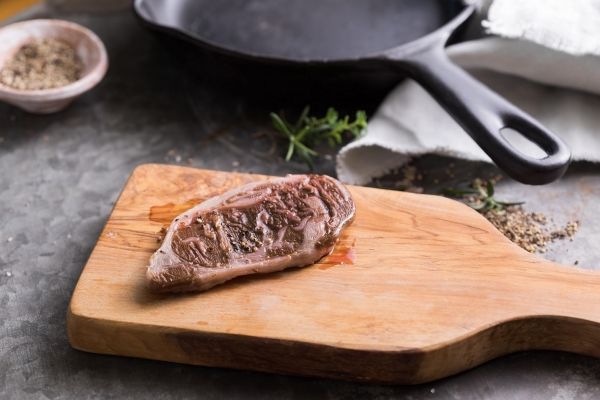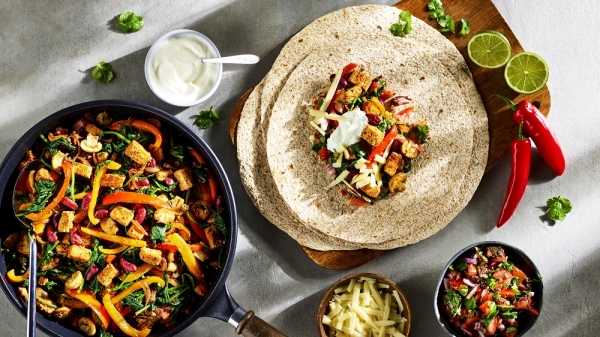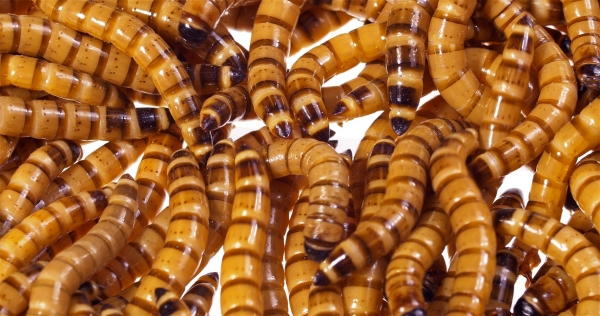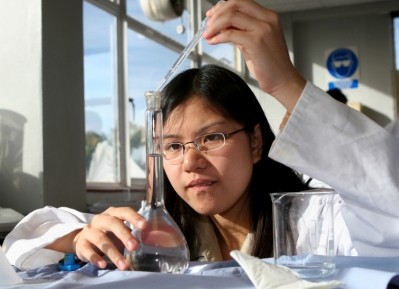Digital feature
Alternative proteins: cultured meat versus insects
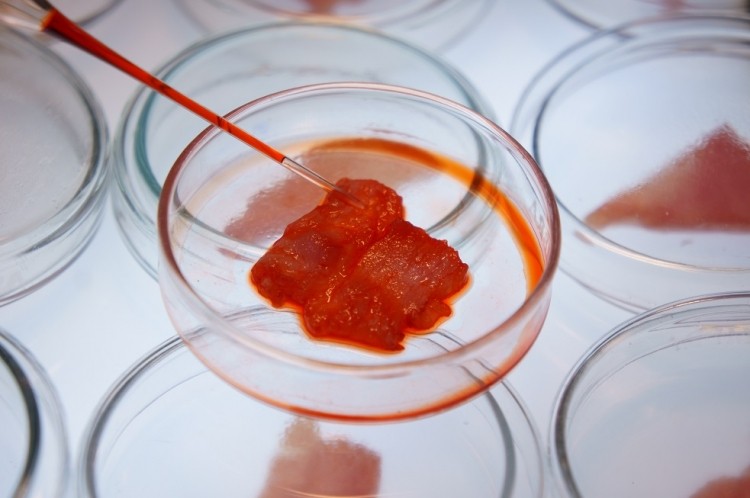
Investment in cultured meat - or lab-grown meat - topped $350m last year, with 70 start-ups and more than 40 primary life science companies diving into the arena. That's according to Good Food Institute's (GFI's) 2020 State of the Industry report on Cultivated Meat. The paper claims that within the alternative protein sector, which includes plant-based and fermentation segments, cultivated meat accounts for 14% of overall annual private sector investments.
$40-trillion-dollar investment network FAIRR claims 2021 has been 'the year of cultivated meat' as private investment in cultured meat technology hit $506m in the first six months of the year.
That momentum shows no signs of abating. Big consumer product manufacturers, ingredients and processing equipment suppliers attracted attention in 2021 by declaring their interest in the emerging market. In July, Nestlé announced it was 'evaluating innovative technologies to produce cultured meat or cultured meat ingredients with several external partners and start-ups'.
Givaudan, Bühler, Migros
Only last month, flavours and fragrances house Givaudan, technology firm Bühler and Swiss retail group Migros officially launched The Cultured Food Innovation Hub at The Valley in Kemptthal near Zurich. The aim of the new centre is 'to accelerate the development and market penetration of cellular agriculture products'. It will start operations in 2022.
Ian Roberts, chief technology officer at Bühler, says: “Cellular agriculture offers a solution in several areas from reducing land use and water, to animal welfare, to the safety and quality of the food chain."
Also in September, frozen food firm Nomad Foods, the name behind brands such as Findus and Birds Eye, and BlueNalu, which develops seafood products from fish cells, said they would explore the introduction of cell-cultured seafood in Europe.
Heck, even Leonardo DiCaprio has invested in prominent cultured meat companies Aleph Farms and Mosa Meat, although the exact sum remains undisclosed. Netherlands-based Mosa Meat made its name in 2013 by unveiling the first cultivated hamburger, while Israel's Aleph Farms broke fresh ground by producing the first cultivated steak and ribeye in 2018 and 2021 respectively.
MeaTech 3D
A host of start-ups are making headway to support food firms. For instance, MeaTech 3D Limited, a technology company developing a suite of advanced manufacturing technologies for cultivated meat production, announced in September that its Belgian subsidiary, Peace of Meat, has cultivated just over 700g of pure chicken fat biomass in a single production run.
Sharon Fima, founder and chief executive of MeaTech, which in July announced research into cultured pork, says: “The production capabilities we have demonstrated today are a successful step in line with our strategy of developing a pilot plant for cultivated fat production, which we are planning for 2022.”
GFI and a host of other organisations point to these and a plethora of other developments to demonstrate the power and future potential of the sector. Pressure is increasing on food manufacturers, especially those active in traditional proteins, to get on board or end up with (plant-based?) egg on their faces as their relevance and ethical currency is questioned in the face of their environmental impact.
Research commissioned by cultivated meat firm Ivy Farm and conducted by Oxford Economics claimed the UK risked losing £2.1bn-worth of benefit to the UK supply chain if the Food Standards Agency did not approve cultivated meat products for sale before 2023. The UK industry would be worth £1.7bn by 2030, would generate £523m in tax and provide up to 8,300 new highly skilled jobs.
Ivy Farm Technologies chief executive officer Rich Dillon says: "If we can release the handbrake and seize the ‘first mover’ advantage, the UK can become a powerhouse for alternative proteins, exporting our products and technology across the globe and reducing the UK’s reliance on imported meat.”
So no pressure then. Surely, any stick-in-the-mud persisting in their scepticism in the face of such claims is almost on a par with a climate-change denier.
More mainstream options
Well, first let's remember that there are other more mainstream alt proteins aside from cultivated meat. The case for plant-based options is well-established and receives prominent coverage in The National Food Strategy - The Plan, published in July.
Then there's funghi, which has been championed for decades by early adopters such as Quorn, which has demonstrated the commercial feasibility of fermenting the fungus Fusarium venenatum to produce affordable meat analogue products. In addition to its commitment to grow its plant-based Plant Kitchen range, Marks & Spencer has forged a partnership with mycoprotein start-up Enough, for example. So let's not kid ourselves that cell-based meat is the only choice.
Is it a superior choice in comparison to other routes though? To answer that, we need to examine the economics, technology and the science. Fortunately, two highly relevant papers addressing these areas have been published since December last year, as highlighted by an article published by The Counter last month.
How the economics stack up
Cultivated Meat review of the cost of manufacturing is produced by independent consultant Huw Hughes, who advises biomanufacturers in budgeting for and establishing their production facilities. The assessment looks at GFI's latest techno-economic analysis (TEA). "It is estimated that the cost of 1 kg of cell culture product for consumption would be in excess of $8,500 to $36,000 per kg," it begins. "By comparison the wholesale price of trimmed chicken meat in the US is $3.11 (February 2021)."
Nor would costs be limited to the cell manufacturing process, he argues. In addition to common features such as downstream processing, packaging, goods-in and goods-out areas, a canteen, car parking and a quality control lab:
A commercial cultured meat facility would need
- A machine room, which depending on scale might have to be housed in a separate building
- A tank farm housing air and gas feeds to bioreactors and other equipment
- A production freezer area to store frozen cells for culture
- A media kitchen
- An area for myocyte cell fermentation
- An area for adipocyte cell fermentation
- An area for storing sanitary equipment
Factory design alone for such a specialist facility, excluding processing equipment, would cost between $3,000 and $6,000/m2. In addition, he states: "The environmental impact of producing cell-cultured meat is ill-defined. The factory itself is expensive and energy-inefficient. Clean steam, USP water generation and use for sterilization, wastewater treatment, and heating will all be energy intensive."
Hughes concludes that GFI's estimates do not include crucial elements and should be revised up, to a minimum of $9,000 to $36,000/kg +30% of cell cultured protein. However, he acknowledges proposals that renewable energy be used, and that governments could subsidise the cost of the factory and its operation.
'Significant engineering effort'
Meanwhile, in Scale-Up Economics for Cultured Meat: Techno-Economic Analysis and Due Diligence (https://doi.org/10.31224/osf.io/795su), commissioned by Open Philanthropy, author David Humbird, principal engineer at DWH Process Consulting, states in his abstract: "Bioreactor design principles indicate a variety of issues associated with bulk cell growth in culture: low growth rate, metabolic inefficiency, catabolite and CO2 inhibition, and bubble-induced cell damage will all limit practical bioreactor volume and attainable cell density. With existing bioreactor designs and animal cell lines, a significant engineering effort would be required to address even one of these issues.
"Capital- and operating-cost analyses of conceptual cell-mass production facilities indicate production economics that would likely preclude the affordability of their products as food. The analysis concludes that metabolic efficiency enhancements and the development of low-cost media from plant hydrolysates are both necessary but insufficient conditions for the measurable displacement of conventional meat by cultured meat."
Humbird relates the case of a facility know as the Pruteen fermentor, which in 1979 began producing single-cell protein animal feed developed by ICI in response to soaring soybean meal prices. Dogged with problems associated with production costs and operations, it had been decommissioned by 1987. The technology behind Pruteen was then built on to produce Quorn.
Regulatory hurdles
The numbers and the technology are not the only issues. There are regulatory hurdles. In order to sell cultured meat for consumption, producers have yet to achieve approval under Novel Foods Regulations in the UK and, separately, in the EU. This is widely acknowledged to be a time-consuming process.
So far, only one company has won approval to market cultured meat products for human consumption anywhere in the world. That's US cultivated meat company Eat Just, which has clearance to sell its cultured chicken nuggets in Singapore under its Good Meat brand. That said, The Qatar Free Zones Authority and the Ministry of Public Health have indicated their intention to grant regulatory approval for Good Meat cultivated chicken very soon.
GFI argues that with sufficient research funding, technology will evolve and costs for commercial scale cultivated meat production will come down. However, the clock is ticking in terms of the need to produce workable solutions to help feed a burgeoning global population and the question of the timescale needed to deliver cultured meat at an affordable price for all remains open.
Future Meat
Israeli start-up Future Meat has achieved some of the most cost-effective work on scale to date, as Sagentia Innovation highlights in its whitepaper From barn to bioreactor.
Future Meat has backing from Archer Daniels Midland, Tyson Foods and S2G. "The company is now producing 110g of chicken breast for just under $4, down from $7.50 at the start of 2021," the whitepaper states. "However, it is worth noting that this compares to an average price of just $0.80 for a traditional chicken breast in the US."
Sagentia Innovation is a research and development consultancy that works with leading food businesses and technology start-ups in the field of cultured meat. It acknowledges the scale of the problem, but like GFI says it's worth pushing ahead. Phil Mackie, managing partner, food and beverage at Sagentia Innovation, says: "For cultured meat to really take off, it needs to out-perform conventional and plant-based meats on multiple levels.
"For sustainability claims to stand up to scrutiny, manufacturing methods need to minimise energy and water consumption. Nutritional claims will have to be backed up with scientific evidence. Naturally the taste, texture and appearance of end products is crucial. And ultimately, the products need to be affordable.”
At the moment, Sagentia Innovation says, development is uncoordinated and fragmented and more collaboration between established players and start-ups needs to occur.
Edible insects: how do they stack up
By comparison, how does the commercial production of insects for human consumption compare?
According to Profitability of insect farms (https://doi.org/10.3920/JIFF2020.0087), a study authored by H H Niyonsaba et al published in Journal of Insects as Food and Feed, 7, 21 April 2021: pp 923-934 online, the economics seem more attractive. "The energy, feed, and labour margin for production of H. illucens [the black soldier fly] ranges from €798 to €15,576 per tonne of dried larvae," the paper abstract states.
"The feed and labour margin for production of T. molitor [yellow mealworm] ranges from €7,620 to €13,770 per tonne of fresh larvae. For production of A. domesticus [the house cricket] the feed margin ranges from €12,268 to €78,676 per tonne of larvae meal."
Unique costs would include farming many insects inside at certain temperatures, where they could only thrive in particular climates or seasons.
The black soldier fly is the least expensive option here. It's no surprise, then, that black soldier fly farming is 'the most widespread form of insect farming in the world', according to Netherlands-based Insect Engineers.
Regulatory issues
In addition, insects are further down the line than cultured meat in terms of regulatory approval, at least in the EU.
By contrast, the European Food Safety Authority (EFSA) issued an opinion on 13 January this year that dried yellow mealworm larvae (the larval form of T. molitor) was safe for human consumption (https://doi.org/10.2903/j.efsa.2021.6343). That was followed by a green light for frozen and dried formulations of T. molitor larvae (https://doi.org/10.2903/j.efsa.2021.6778).
EFSA delivered a similar thumbs up for migratory locusts (locusta migratoria) (https://doi.org/10.2903/j.efsa.2021.6667) and house crickets (https://doi.org/10.2903/j.efsa.2021.6779).
It helps that insects are considered as traditional foods in more than 100 countries of Asia, Africa, and South America according to Edible insects: An overview on nutritional characteristics, safety, farming, production technologies, regulatory framework, and socio-economic and ethical implications, from Trends in Food Science & Technology, volume 100, June 2020, pp 35-50, Antonietta Baiano (https://doi.org/10.1016/j.tifs.2020.03.040).
Allergens and the 'yuck factor'
That said, the same study warns there are still food safety concerns: attention must be paid to the cross-reactions among allergens found within some insect species.
Ermolaos Ververis, a chemist and food scientist at EFSA, who coordinated the T. molitor opinion, says: "Critically, many food allergies are linked to proteins so we assess whether the consumption of insects could trigger any allergic reactions. These can be caused by an individual’s sensitivity to insect proteins, cross-reactivity with other allergens or residual allergens from insect feed, for example gluten."
As Giovanni Sogari, a social and consumer researcher at the University of Parma, states, producers also need to overcome consumer aversion to insects in regions where they are not customarily eaten: “There are cognitive reasons derived from our social and cultural experiences, the so-called ‘yuck factor’, that make the thought of eating insects repellent to many Europeans."
However, he adds: "With time and exposure such attitudes can change.”
Ÿnsect
One company leading the way in the area is Ÿnsect, which was founded in Paris, France in 2011. The business now uses pioneering proprietary technology protected globally by 300 patents to produce molitor and buffalo mealworms in vertical farms.
Ÿnsect is currently building its third production unit, the largest vertical farm in the world, in Amiens, France and operates two sites in France (since 2016) and the Netherlands (since 2017). It has raised $425m from leading global investors and is exporting its products worldwide.
One of the real benefits of insect farming is that many varieties can live off food waste, creating a potential use for waste streams from the food industry.
On paper, it seems edible insects have the edge over cultured meat at present, but the vast sums being poured into research and development for the latter could tip the scales.

